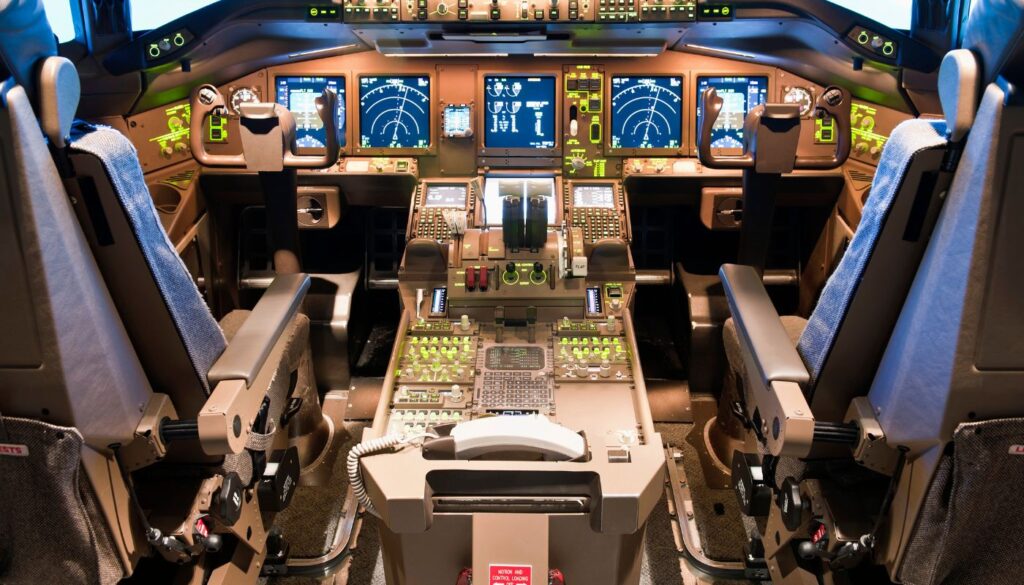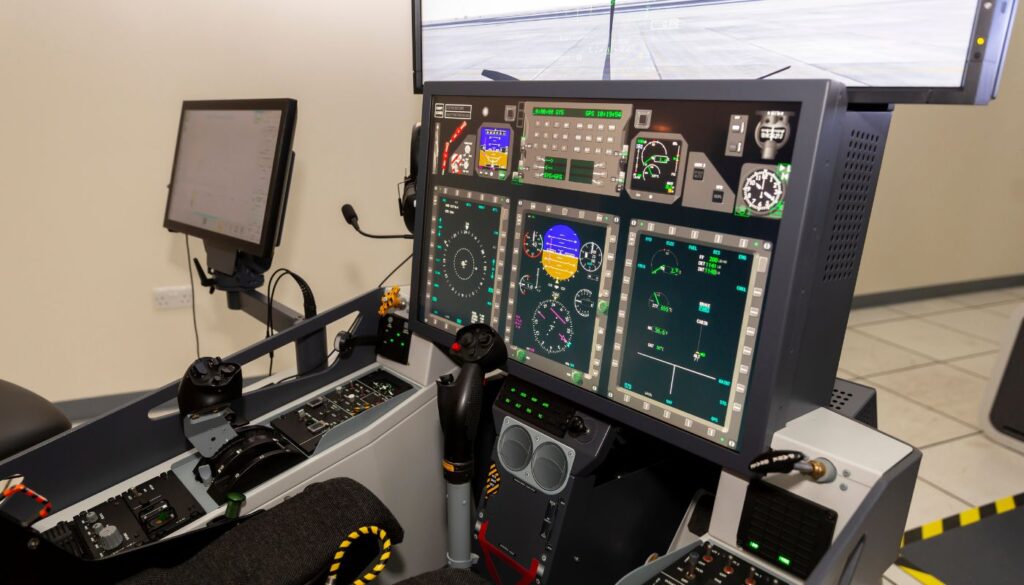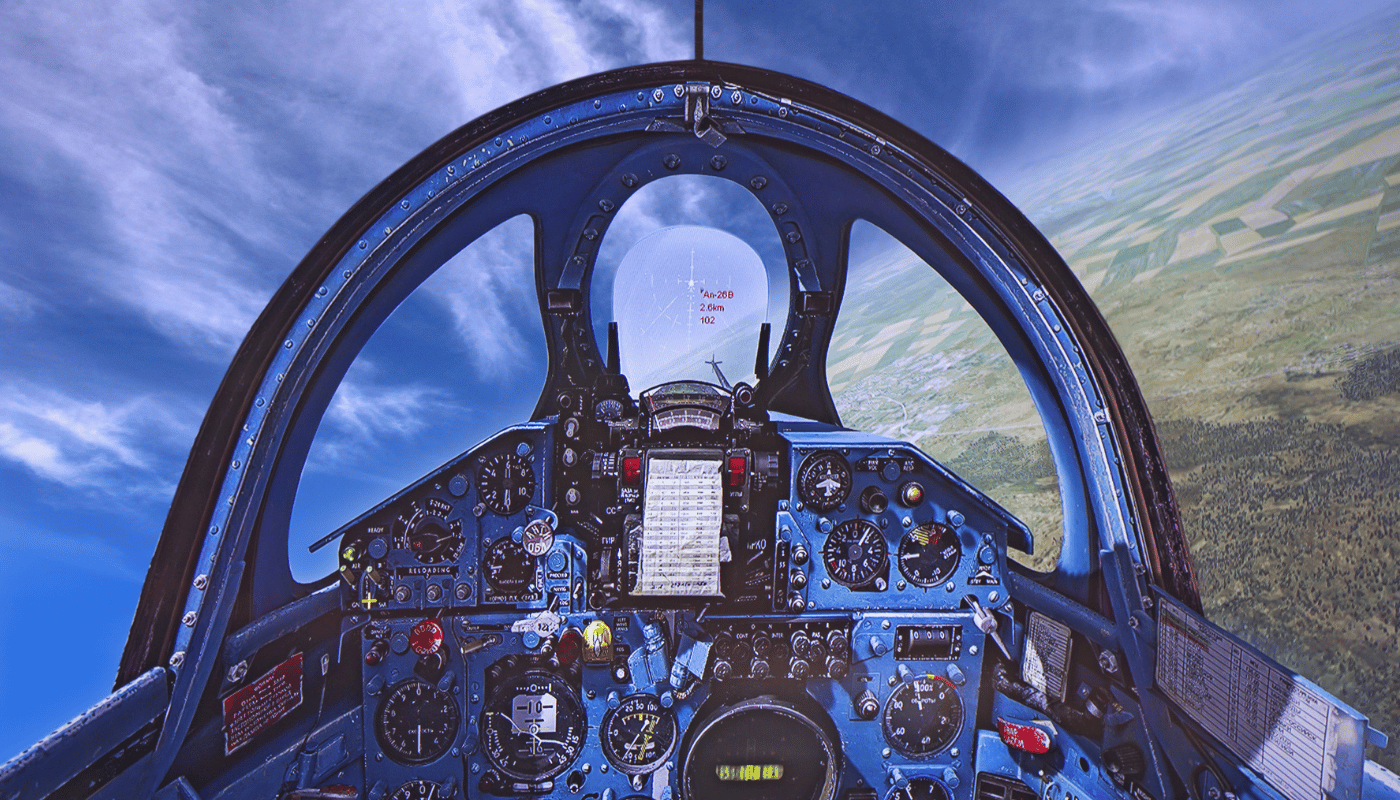Ever wondered how close you can get to piloting a real plane without leaving the ground? Microsoft Flight Simulator has long been celebrated for its breathtaking realism and attention to detail, but just how accurate is it? This intriguing exploration dives into the heart of the simulator’s depiction of aviation, comparing its features to the real-world experience. Join us as we uncover the truth about Microsoft Flight Simulator’s accuracy and what it means for enthusiasts and aspiring pilots alike.
Exploring Microsoft Flight Simulator’s Realism
Microsoft Flight Simulator has long stood as a beacon of realism and technical prowess in the world of flight simulation. Its latest iteration, released in 2020, has pushed the boundaries further, offering an unprecedented level of detail and accuracy in simulating the experience of flying. One of the most notable advancements is the use of satellite imagery and Azure AI, which render the earth in stunning detail, from the vast deserts of Africa to the bustling cities of New York and Tokyo. This technological leap forward means pilots and enthusiasts can experience flights that feel incredibly real, navigating through dynamic weather systems that affect the aircraft’s handling and performance.
Another aspect where Microsoft Flight Simulator shines is in its aircraft fidelity. Each plane, from single-engine Cessnas to the massive Boeing 747, is meticulously modeled to reflect its real-world counterpart’s performance, handling, and cockpit layout. This attention to detail extends to the physics engine, which accurately simulates the aerodynamic forces acting on the aircraft. As a result, pilots must contend with realistic flight dynamics, such as stalling, turbulence, and the effect of wind shear during takeoff and landing. This high fidelity makes the simulator not just a game but a valuable training tool for aspiring pilots.
The integration of real-world air traffic, weather data, and the inclusion of every airport on the planet, from grass strips to major international airports, adds another layer of realism. Pilots can experience landing at their local airport or exploring new destinations, all while navigating the same air traffic and weather conditions they would face in real life. This unparalleled realism has made Microsoft Flight Simulator a must-have for aviation enthusiasts and professionals alike.
Additional Insights: The Technical Marvel Behind Microsoft Flight Simulator’s Realism
The implementation of real-time weather systems and the day-night cycle further enhances the realism, offering pilots the challenge of flying in various conditions. The simulator’s ability to mirror the real world’s unpredictability ensures that no two flights are the same, providing an endlessly engaging experience for users. Moreover, Microsoft’s commitment to regularly updating the simulator with new features, aircraft, and improvements means that its realism and accuracy only continue to grow over time. This ongoing development cements Microsoft Flight Simulator’s position as the pinnacle of flight simulation software, offering an unparalleled flying experience that blurs the line between simulation and reality.
| Feature | Detail Level | Real-World Accuracy |
|---|---|---|
| Global Terrain | High-resolution satellite imagery | Extremely High |
| Aircraft Fidelity | Meticulously detailed models | Very High |
| Weather System | Dynamic and real-time | Highly Accurate |
| Flight Physics | Advanced aerodynamics simulation | Realistic |
| Real-World Airports | Every airport on the planet | Highly Accurate |
Microsoft Flight Simulator has set a new standard for what is possible in flight simulation. Its combination of stunning visuals, intricate details, and real-world physics provides an immersive experience that is as close as one can get to piloting an aircraft without leaving the ground. Whether you’re a seasoned pilot looking to hone your skills or an enthusiast seeking to explore the skies, Microsoft Flight Simulator offers a gateway to the heavens like no other.
Examining the Fidelity of Microsoft Flight Simulator
Microsoft Flight Simulator has captivated aviation enthusiasts and gamers alike with its breathtaking realism and expansive detail. Developed by Asobo Studio and published by Xbox Game Studios, this simulation game stands out for its ambitious scope and technological prowess. At its core, Microsoft Flight Simulator aims to replicate the experience of flying various aircraft as accurately as possible. However, the question of its preciseness in simulating real-world flying conditions is multifaceted.
Firstly, the game’s global mapping technology, powered by Bing Maps, and the incorporation of Azure AI to generate three-dimensional representations of the world’s features, result in an impressively realistic geographic and visual experience. Pilots can navigate cities, landscapes, and airports that feel authentic, enhancing the overall simulation fidelity. However, while major landmarks and airports are meticulously detailed, some remote areas and smaller airports might not receive the same level of precision, revealing a slight discrepancy in global accuracy.
Secondly, the flight dynamics and aircraft systems are where Microsoft Flight Simulator shines. The developers collaborated closely with aircraft manufacturers to model the flight characteristics and cockpit intricacies of each plane. This dedication to realism ensures that the physical behavior of the aircraft, from takeoff to turbulence and landing, closely mirrors real-world physics. Nonetheless, the inherent limitations of consumer-grade hardware and the complexities of simulating every possible weather scenario mean there are inevitable compromises. Professional pilots and flight instructors often note these differences, although they also acknowledge the simulator’s value as an educational tool.
- Global mapping technology powered by Bing Maps
- Azure AI-generated 3D world representations
- Detailed major landmarks and airports
- Highly accurate flight dynamics
- Collaboration with aircraft manufacturers for authentic cockpit designs
Further Insights into Microsoft Flight Simulator’s Realism
Exploring beyond the surface, it becomes evident that Microsoft Flight Simulator does an exceptional job of bridging the gap between simulation and reality. The game offers a unique platform for aviation enthusiasts to explore the skies virtually, with a level of detail that was previously unthinkable. While it’s not without its flaws, the simulator sets a new benchmark for what’s possible in flight simulation, offering both entertainment and educational value to its users. As technology advances, we can only expect future iterations to become even more accurate, further blurring the lines between virtual and real-world aviation.
Aircraft Performance and Realism

The fidelity of aircraft performance and realism in Microsoft Flight Simulator is a subject that garners much attention from both aviation enthusiasts and pilots alike. The simulator, often lauded for its breathtaking visuals and expansive world, also strives for accuracy in its depiction of aircraft behavior, aerodynamics, and cockpit functionalities. This commitment to realism is evident in the meticulously detailed aircraft models, each crafted to mirror their real-world counterparts as closely as possible. However, the question of how accurate these simulations are in practice invites a nuanced examination.
At the heart of Microsoft Flight Simulator’s approach to aircraft realism is its sophisticated flight model. The simulator uses advanced algorithms to calculate aerodynamic forces, providing a dynamic flight experience that reacts to weather conditions, air density, and aerodynamic changes. This means that pilots can expect a highly realistic representation of aircraft handling, from the stall characteristics of a Cessna 172 to the complex systems management of a Boeing 787. The accuracy of these models is such that real-world pilots often remark on the simulator’s utility as a training tool, particularly for procedural training and familiarization with aircraft systems.
Despite these strengths, there are limitations to the simulator’s realism. The complexity of simulating every aspect of flight means that some compromises are made. For example, the feedback provided by flight controls in a real aircraft—such as the force felt on a yoke or rudder pedals—is challenging to replicate precisely with home flight sim hardware. Furthermore, while the simulator excels in visual and systemic accuracy, the experience of flying can sometimes feel sanitized, lacking the unpredictability and tactile feedback of flying an actual aircraft. These discrepancies do not detract significantly from the overall realism but are worth noting for those seeking a perfectly authentic flying experience.
To provide a clearer understanding of how Microsoft Flight Simulator stands in terms of realism and accuracy, consider the following aspects:
- Aircraft Systems and Avionics: The simulator offers highly detailed cockpit recreations, with many aircraft featuring interactive buttons, switches, and systems that function just like their real-world counterparts.
- Flight Dynamics: Utilizing complex physics models, the simulator accurately captures the effect of various flight conditions on aircraft performance, from lift and drag to engine response.
- Weather Effects: Real-time weather data feeds into the simulator, affecting aircraft performance and handling in ways that closely mirror real flight conditions.
- Aerodrome Detail: Many airports, from bustling international hubs to small regional airstrips, are recreated with high fidelity, offering realistic environments for takeoff, landing, and taxi operations.
- Training Tools: The simulator includes features designed to help pilots of all skill levels improve their flying, with tutorials covering basic flight principles to advanced navigation techniques.
In conclusion, while no simulator can perfectly replicate the full spectrum of sensations and variables present in real-world flying, Microsoft Flight Simulator comes impressively close within the constraints of current technology. Its aircraft performance and realism offer a valuable resource for training, planning, and entertainment, bridging the gap between simulation and actual flight in many meaningful ways.
Weather Systems and Environmental Accuracy
Microsoft Flight Simulator has set a new benchmark in the realm of flight simulation with its groundbreaking approach to weather systems and environmental accuracy. By leveraging real-world data and advanced algorithms, the game presents an unparalleled depiction of global weather patterns and environmental conditions. This includes dynamic weather changes, which accurately reflect the real-time weather in any given location around the globe. Pilots in the simulator can experience the sudden onset of a thunderstorm, the gradual buildup of cloud cover, or the pristine clarity of a sunny day with startling fidelity.
Moreover, the environmental accuracy extends beyond just weather. The game meticulously models terrain textures, bodies of water, and urban landscapes using satellite imagery and 3D photogrammetry. This not only enhances the visual appeal but also significantly improves the realism of flight simulation experiences. Pilots can navigate using real-world landmarks, follow accurate river paths, and even recognize individual buildings in major cities. The attention to detail in recreating the Earth’s geography and urban environments is truly remarkable, providing an immersive experience that rivals actual flight.
However, it’s important to note that while Microsoft Flight Simulator excels in many areas, there are occasional discrepancies. These can arise from outdated satellite images or the simplified modeling of certain regions. Despite these minor limitations, the simulator remains an exceptional tool for both aviation enthusiasts and professionals. It offers a realistic platform for navigation practice, understanding weather impacts on flight planning and execution, and appreciating the breathtaking beauty of our planet from an aerial perspective.
- Real-time weather updates for global locations
- Dynamic weather systems including storms and clear skies
- High-resolution satellite imagery for terrain and urban areas
- 3D photogrammetry for detailed environmental realism
- Accurate modeling of landmarks for navigation
Geographic and Scenic Precision
The fidelity with which Microsoft Flight Simulator represents our world is nothing short of remarkable. At its core, the game utilizes Bing Maps data and Azure AI, creating a dynamic and ever-evolving digital twin of our planet. This technological backbone allows for the reproduction of cities, landscapes, and even weather conditions with an impressive degree of accuracy. However, it’s imperative to understand the nuances that come with simulating the entire globe, especially when evaluating the geographic and scenic precision of the simulation.
First and foremost, urban areas receive a considerable amount of detail, thanks to photogrammetry technology. Major cities like New York, Paris, and Sydney are not just recognizable; they are vividly brought to life with accurate building shapes, parks, and infrastructure. This level of detail extends to famous landmarks, which are meticulously crafted to offer an immersive experience. Flying over the Statue of Liberty or the Eiffel Tower, pilots can appreciate the attention to detail that has been invested in these iconic structures.
However, it’s important to temper expectations when venturing into less populated or remote areas. While the overall topography is generally accurate, reflecting the major geographical features such as mountains, valleys, and rivers, the resolution and detail in these regions can vary. The auto-generated content, used to populate vast swaths of the globe with vegetation and buildings, does a commendable job but occasionally falls short of replicating the idiosyncrasies of local architecture and flora. Despite these limitations, the experience remains immersive, offering a unique perspective of our planet’s diverse landscapes.
- Photogrammetry technology brings major cities to life with stunning detail.
- Famous landmarks are meticulously recreated, enhancing the simulation’s realism.
- The game’s use of Bing Maps data and Azure AI ensures a dynamic representation of the world.
- Remote areas, while accurately mapped, may lack the finer details found in urban environments.
- Weather conditions are dynamically simulated, adding another layer of realism to the flying experience.
In conclusion, Microsoft Flight Simulator offers an unparalleled geographic and scenic precision in the realm of simulation games. The blend of cutting-edge technology and comprehensive data collection results in a world that feels alive and responsive. While there are occasional discrepancies in the level of detail, especially in less populated areas, the overall experience remains profoundly engaging. For aviation enthusiasts and casual players alike, the game opens up a world of exploration and discovery, grounded in a realistic representation of our planet.
Air Traffic and Airport Operations
Microsoft Flight Simulator has been acclaimed for its groundbreaking realism and attention to detail, particularly in the areas of air traffic and airport operations. The simulation offers a highly realistic experience, thanks to its sophisticated algorithms and real-world data integration. Players can expect to see a dynamic environment, with aircraft adhering to genuine flight paths, schedules, and procedures.
One of the most impressive aspects of Microsoft Flight Simulator is its depiction of airport operations. The game meticulously recreates over 37,000 airports worldwide, with some of the larger, more famous airports featuring highly detailed, accurate layouts. This includes runway markings, taxiway signage, and even ground service equipment movements, contributing to an immersive experience. Additionally, the simulation’s weather system affects airport operations in real-time, introducing challenges such as visibility reductions and the need for de-icing procedures during winter months.
However, it’s important to note that while the simulator strives for realism, there are limitations. The air traffic control (ATC) system, although improved, occasionally exhibits less than realistic behavior, such as issuing improbable clearances or not accurately managing busy airspace. These instances, while not frequent, can momentarily disrupt the immersion. Nevertheless, ongoing updates and community mods have continually enhanced the ATC system’s realism, showing Microsoft’s commitment to authenticity.
Further Enhancements in Air Traffic and Airport Operations
- Continuous updates to ATC voice synthesis for more natural interactions.
- Expansion of airport ground services, including catering and passenger boarding.
- Integration of real-world flight schedules for more dynamic air traffic.
- Improvements in AI behavior to simulate emergency procedures accurately.
- Enhanced weather simulation impacting airport and air traffic operations.
Challenges and Limitations of the Simulation

While Microsoft Flight Simulator has been acclaimed for its breathtaking realism and attention to detail, it is not without its challenges and limitations. One of the primary obstacles is the hardware requirements necessary to run the simulation at its full potential. Users require high-end PCs to experience the most detailed environments, which can be a significant barrier for enthusiasts with limited resources. Furthermore, the simulation’s reliance on streaming data for its real-time weather and terrain features necessitates a stable and robust internet connection, potentially excluding users in areas with poor connectivity.
Another significant challenge is the accuracy of the simulated environments. Despite the developers’ efforts to create a true-to-life experience, discrepancies in terrain and airport details can occur, especially in less-populated or remote areas. These inconsistencies, though minor to some, can detract from the immersive experience for users seeking the utmost realism. Additionally, the simulation’s AI traffic and real-time air traffic control features, while innovative, sometimes lack the unpredictability and complexity of real-world aviation, leading to a less authentic experience.
The complexity of accurately modeling the physics of flight for a wide range of aircraft types presents another hurdle. While Microsoft Flight Simulator excels in simulating general aviation aircraft, the nuances of flying larger, more complex airliners can sometimes feel oversimplified to experienced pilots.
Exploring the Frontiers of Virtual Aviation
The pursuit of realism in Microsoft Flight Simulator pushes the boundaries of what is possible in virtual aviation. As technology advances, so too will the fidelity of these simulations. Yet, the path forward is fraught with technical and logistical challenges, from enhancing global terrain data to perfecting aircraft dynamics. The journey towards perfect simulation is ongoing, with each update bringing us closer to the skies.
| Aspect | Challenge | Impact on User Experience |
|---|---|---|
| Hardware Requirements | High-end PCs needed | Limits accessibility |
| Internet Connectivity | Reliance on stable connection | Excludes users with poor connectivity |
| Terrain Accuracy | Discrepancies in remote areas | Can detract from immersion |
| AI Traffic and ATC | Lacks unpredictability | Less authentic experience |
| Flight Physics | Challenge in simulating complex airliners | Sometimes feels oversimplified |
In conclusion, while Microsoft Flight Simulator sets a high bar for realism in virtual aviation, it is not without its challenges. From hardware and internet requirements to the intricacies of simulating the natural world and complex aircraft systems, these limitations shape the user experience. Despite these hurdles, the simulator remains a groundbreaking tool for aviation enthusiasts, providing a glimpse into the future of flight simulation technology.
As we move forward, both developers and the community play crucial roles in overcoming these challenges, enhancing the realism and accessibility of this remarkable simulation. The journey of virtual aviation is far from over, and with each update, we edge closer to a seamless blend of the virtual and the real, where the sky is the only limit.

